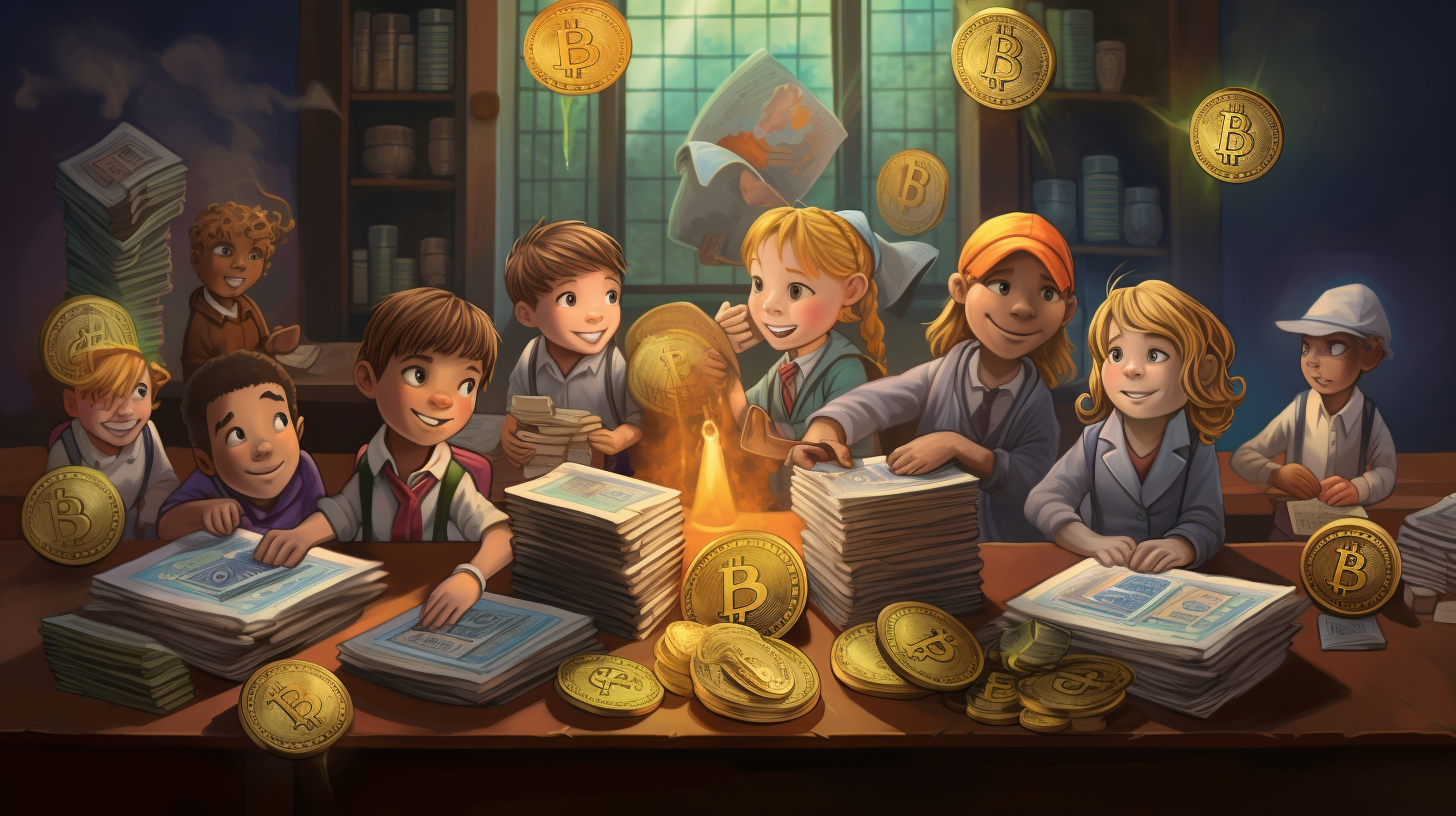The very notion of stacking satoshis as grades might once have seemed like a distant dream. Yet, here we are, at the brink of a major paradigm shift—a reality where presenting a Bitcoin wallet address could be analogous to showing one’s degree. In the illuminating spectral glow of our screens, we’ve witnessed the reshaping of our economy; now, it’s the landscape of education that’s ripe for innovation. Let’s dive into this digital sea of possibilities—where knowledge is currency, and the halls of learning, virtual or not, echo with the chimes of crypto transactions.
The Crypto-Classrooms of Tomorrow
Imagine stepping into a classroom—a virtual reality space perhaps—where your login is a blockchain ID, and your participation rewards you in cryptocurrency. These crypto-classrooms aren’t simply about attending lectures but engaging in a dynamic, incentivized environment. Students can earn tokens for completing assignments, contributing to discussions, or even peer-reviewing. This isn’t just gamification; it’s the monetization of the educational trajectory, a lucrative merger between learning and earning.
Transparent Tuitions: The Blockchain’s Open Ledger
Gone are the days of puzzling through tuition fees and student loans. Cryptocurrency brings radical transparency to educational expenses. Institutions can program tuition costs into smart contracts—immutable agreements on the blockchain. Upon fulfilling certain conditions, such as enrollment or passing an exam, funds would release automatically. This system could potentially eliminate administrative overhead, minimize human error, and make the process of financing education smoother and more predictable.
Micro-Credentials, Mighty Impact
As discussed in a previous exploration by our team, Universal Learning Ledger: Are Education Blockchains the Future?, blockchain and crypto-integration can innovate credentialing. Micro-credentials, small educational units or digital badges representing specific skills or knowledge, have the potential to reshape hiring as we know it. With cryptocurrency, acquiring and exchanging these tokens of competency could be as simple as sending an email—only far more secure.
Equality in Education or Digital Divide?
While this shift promises a more efficient and potentially equal education system, the specter of the digital divide looms large. As we steer our educational vessels into crypto-waters, it’s vital to remember that not all students have the same resources. Some may lack access to the necessary technologies or infrastructure to participate fully in this new digital realm. Bridging this gap is essential to ensure cryptocurrency doesn’t create an elite educated class but empowers all learners.
Privacy and Policy: The Watershed of Crypto-Education
Let’s not forget that with great power comes great responsibility. The introduction of cryptocurrency into education demands rigorous privacy policies. While blockchain offers unparalleled security, the irreversible nature of transactions and the potential for surveillance are concerns that necessitate a balanced approach. We must craft policies that harness the strengths of crypto and blockchain while protecting student data and maintaining academic freedom.
Looking Forward
As we speculate on this future, one filled with the wonders of blockchain and the financial autonomy that cryptocurrency offers, we stand at an exciting, albeit uncertain, threshold. Depending on how educational institutions, policymakers, and society at large navigate these waters, we could see a future where the term ‘drop-out’ is antiquated, replaced by learners who fluidly move in and out of different educational paradigms, paying in crypto and building a personalized syllabus that suits their aspirations and market needs alike.
Conclusion
In summation, the question is not if, but how soon, the interplay between cryptocurrency and education will reshape our notion of learning. With the potential to decentralize education, personalize learning paths, and democratize opportunities, the crypto-educational wave is set to crest. As we ride it, let’s wield the oars of innovation with foresight, ensuring that when the wave breaks, it brings a tide of empowerment, not disenfranchisement, for the learners of tomorrow.
